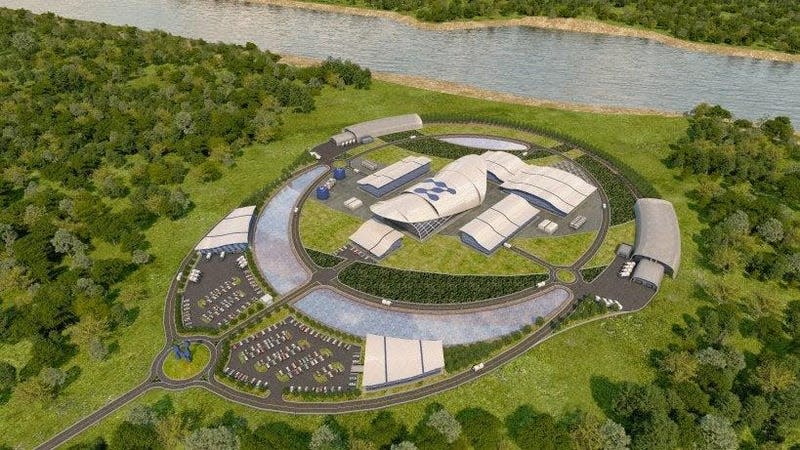U.S. Approves First Small Modular Nuclear Reactor Design

The U.S. has just given the green light to its first-ever small modular nuclear design, a promising step forward for a power source that remains controversial among some climate advocates but is experiencing a popular renaissance.
The Nuclear Regulatory Commission approved the design, which was published Thursday in the Federal Register, from NuScale, an Oregon-based reactor company. The publication of the design in the Register allows utilities to select this type of reactor when applying for a license to build a new nuclear facility. The design would be able to produce a reactor about one-third the size of a usual reactor, with each module able to produce around 50 megawatts of power.
Read more
In addition to being a historic first design for small modular reactors, the NuScale model is also the seventh general nuclear reactor design ever greenlit by the U.S. government. Nuclear energy is a carbon-free electricity source, and can provide valuable baseload power for when renewable energy is offline.
Small modular reactors “are no longer an abstract concept,” U.S. Assistant Secretary for Nuclear Energy Kathryn Huff said in a statement. “They are real and they are ready for deployment thanks to the hard work of NuScale, the university community, our national labs, industry partners, and the NRC. This is innovation at its finest and we are just getting started here in the U.S.!”
Yes, it’s exciting stuff, but nuclear has faced a mountain of challenges in recent decades, thanks to several factors. Chief among them are cost and flexibility of construction: Traditional reactors are massive infrastructure projects that often take decades to build and can get mired in ballooning costs, which makes the energy more expensive in the short term than sources like natural gas and renewables.
Small modular reactors, known as SMRs, solve some of these thorny issues by being made from parts that are able to be manufactured in a factory and then shipped to the site, making them far less expensive and time-consuming to construct, in addition to taking up less space.
Just because a design is on the books doesn’t mean that it’s smooth sailing for the industry or that all our grids are going to be powered by carbon-free nuclear electricity in a few years. NuScale is currently working on a six-module demonstration plant in Idaho that will be fully operational by 2030; the company said this month that its estimates for the price per megawatt hour of the demo plant had jumped by more than 50% since its last estimates, in an uncomfortable echo of ballooning costs associated with other traditional nuclear projects. Small modular reactors still produce nuclear waste, which some environmentalists say is a concern that can’t be overlooked as the industry develops.
The pace of nuclear development is also a challenge for some climate advocates, who say that the industry is too slow to respond to the immediate need to decarbonize. Others, however, argue that renewables alone will not be enough to meet the enormous energy demands of a truly carbon-free society, and that developing nuclear energy is one of the best strategies to get the world off its fossil fuel addiction. The introduction of a small modular reactor design may not resolve some of the deep issues around nuclear technology and the long-standing tensions within the environmental movement about nuclear’s role in the future, but it’s certainly a compelling sign of what could be on the horizon.
More from Gizmodo
Sign up for Gizmodo's Newsletter. For the latest news, Facebook, Twitter and Instagram.

